- Joined
- Apr 4, 2013
- Messages
- 191
Hi Guys
This Brut De Forge Bowie is forged from 5160, it has an 8" blade, is 1 3/4" wide, just under 1/4" thick at the spine and is 12 5/8" long. The gun blued bolsters are dove tailed to match the stabilsed curly maple scales which are held in place on the tapered tang with six gun blued pins and one hand made mosaic pin. The scales and the bolsters are lined with black fibre liners.
The sheath is leather lined and covered with rawhide. The customer wanted a plain style sheath so I have only put five brass dots on the throat flap. The rawhide has been dyed and roughed up to make it look worn.
Thank you for taking the time to look, all comments and questions very welcome.
All the best
Steve
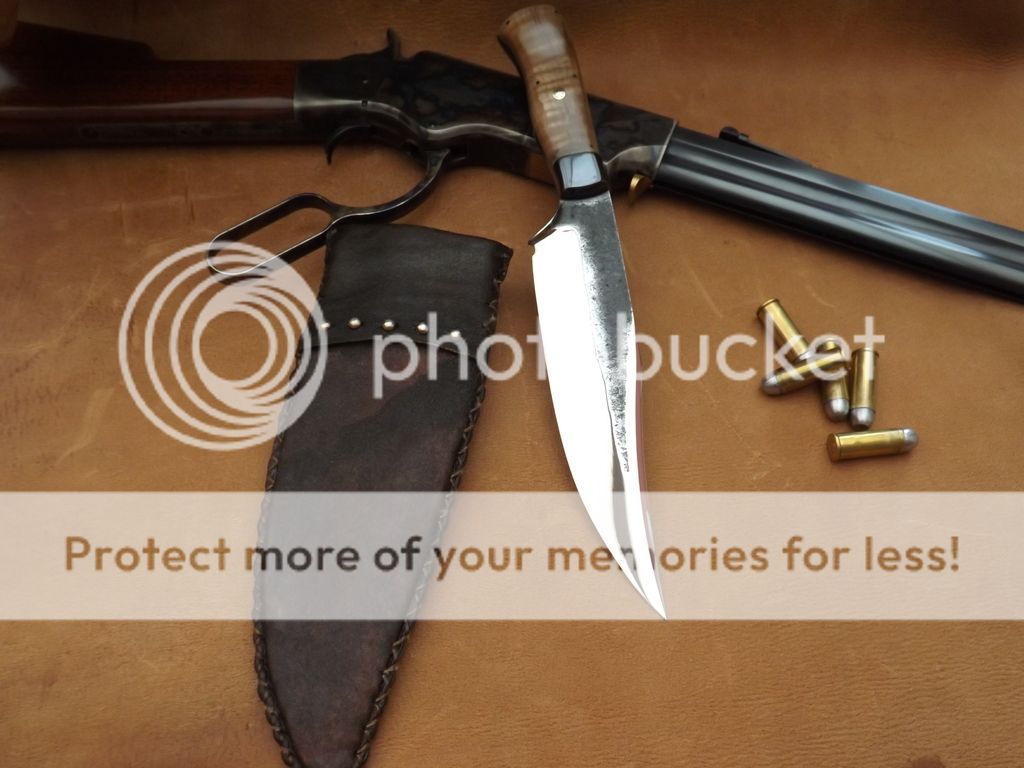
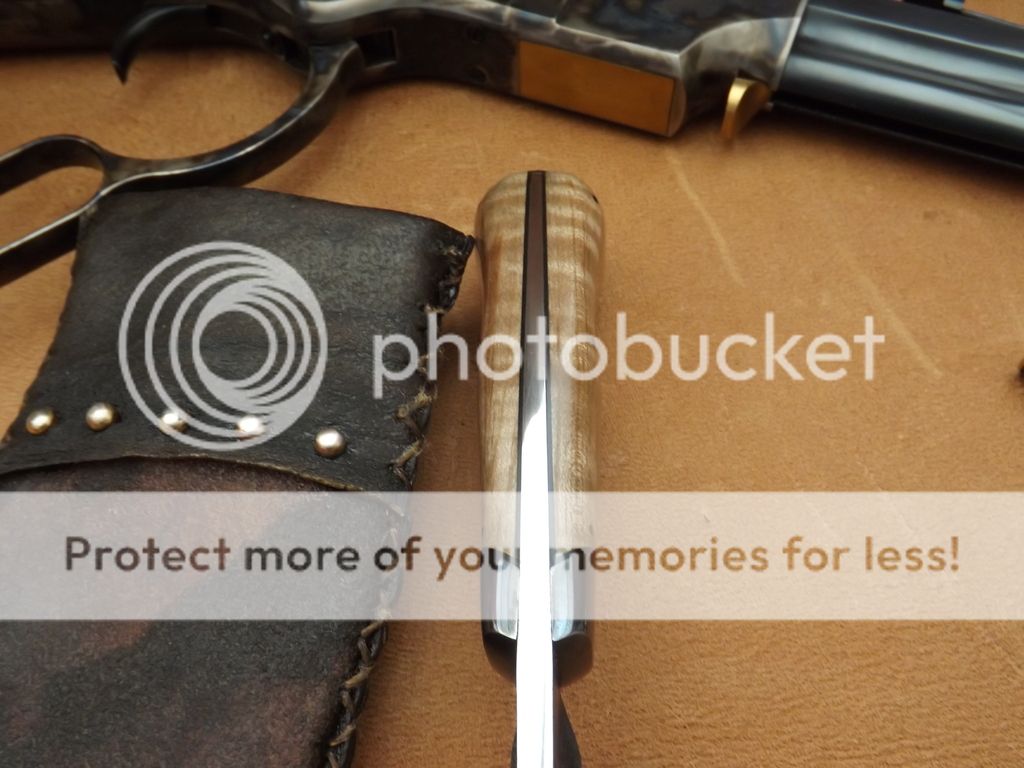
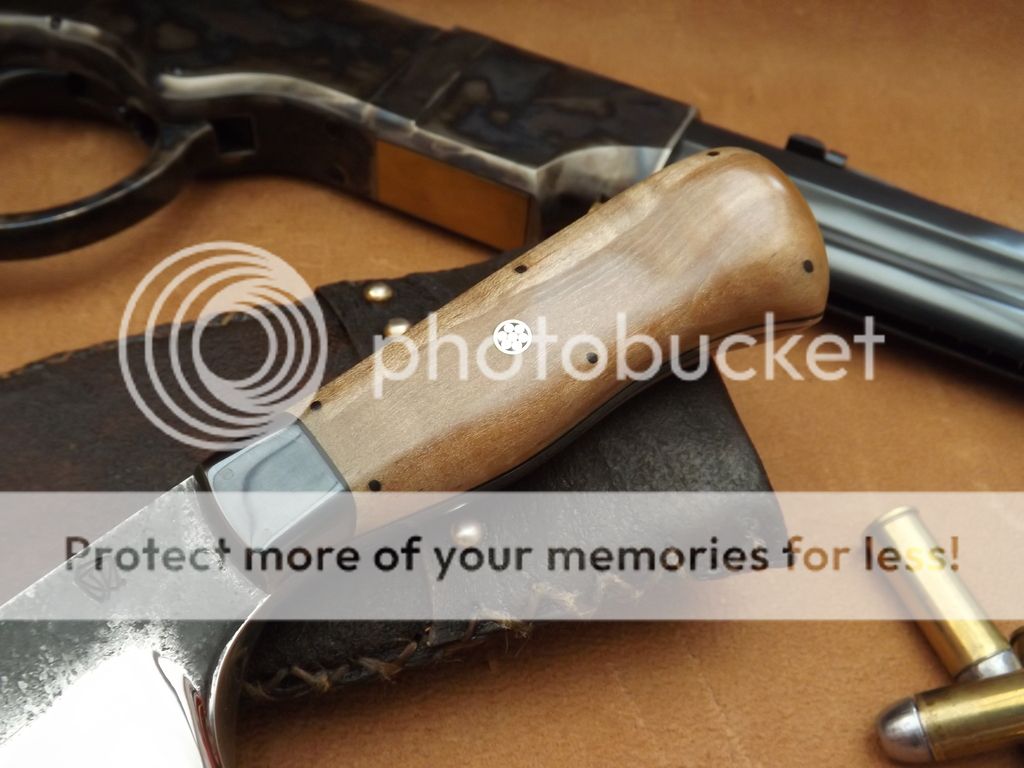
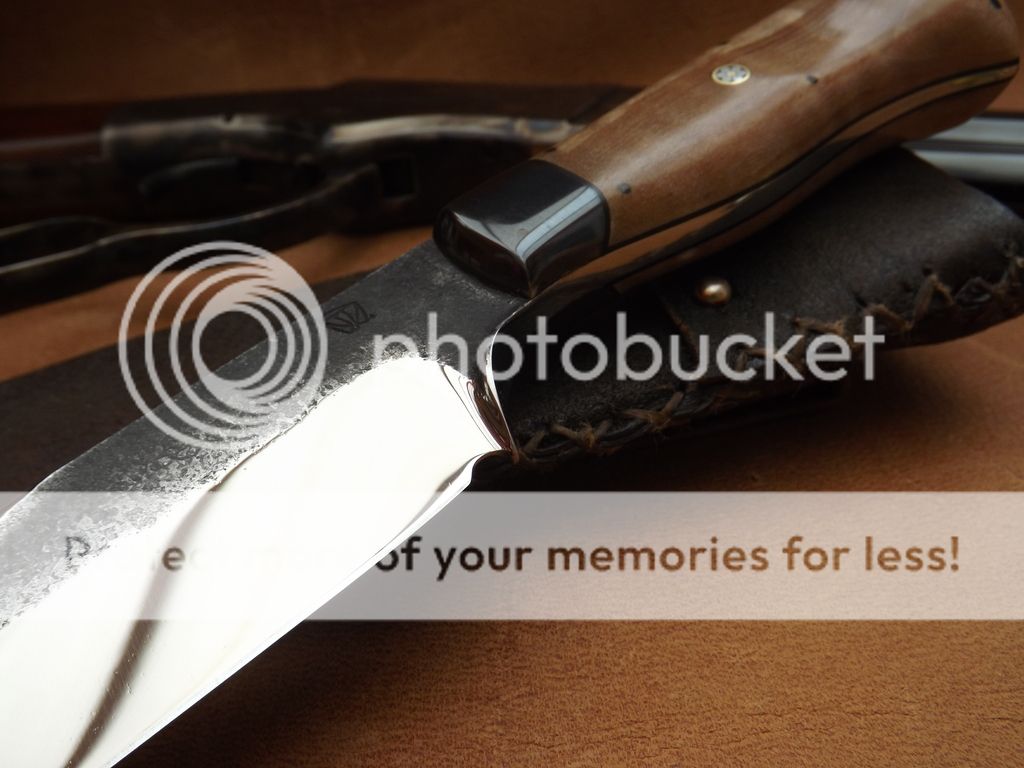
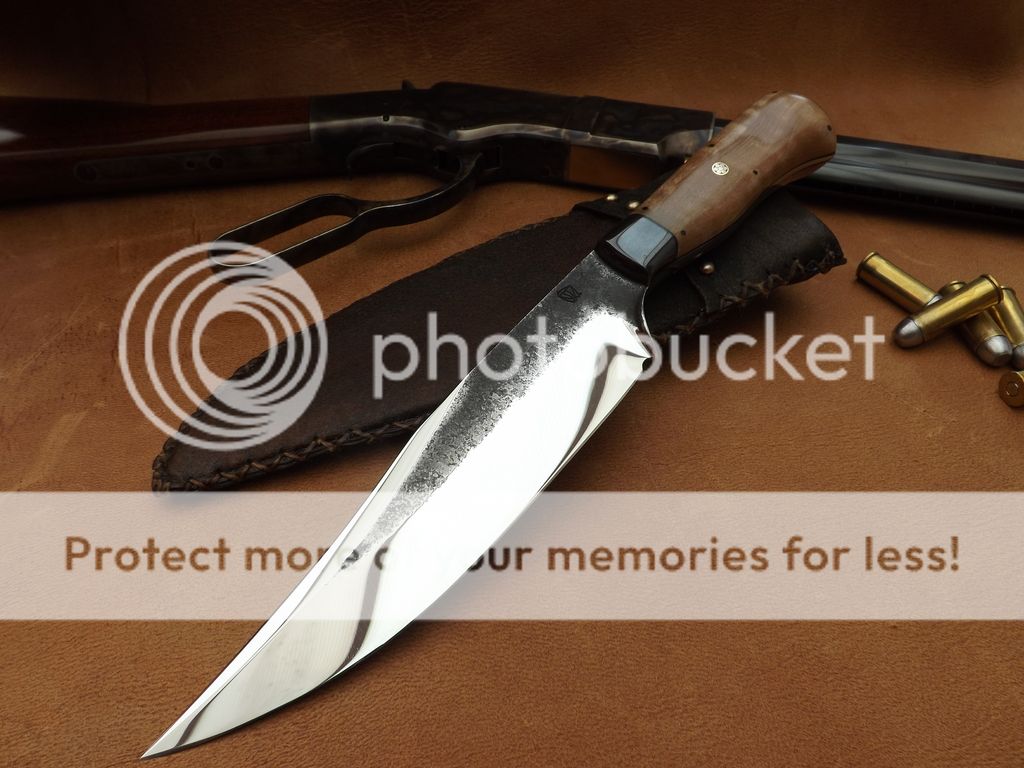
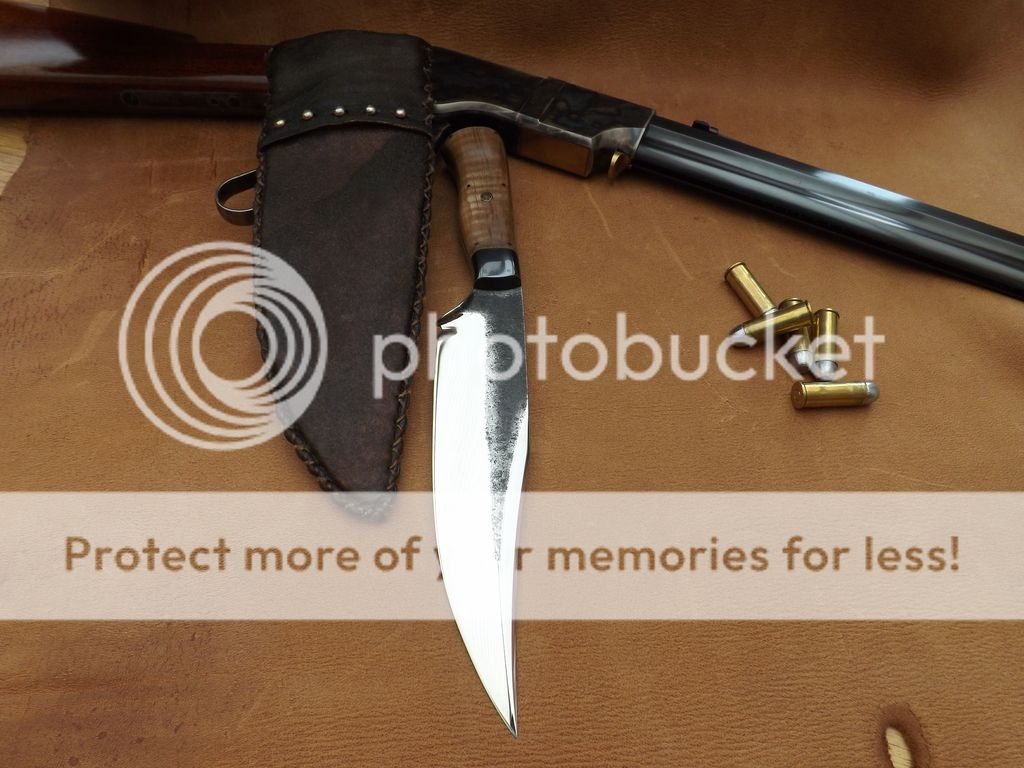
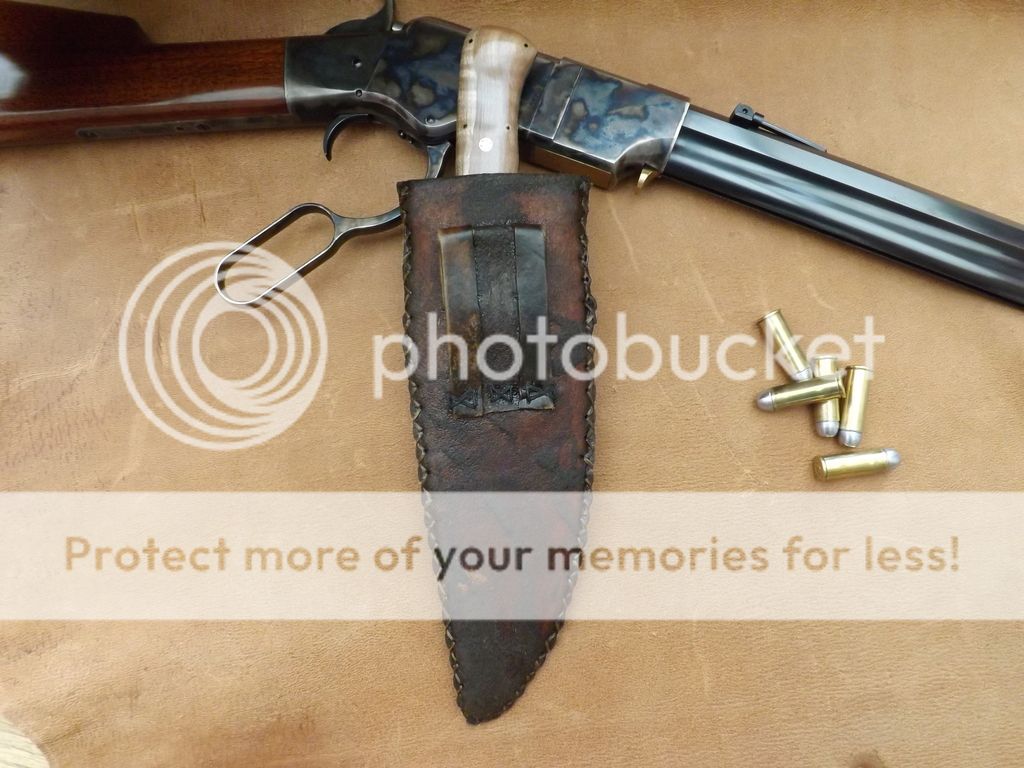
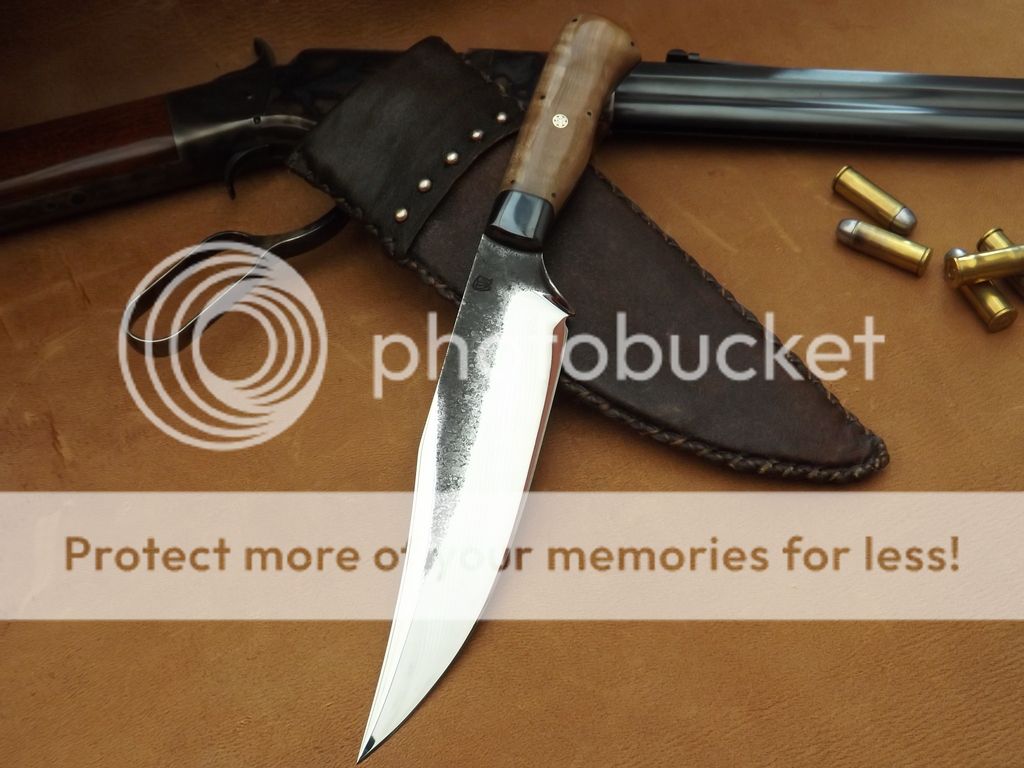
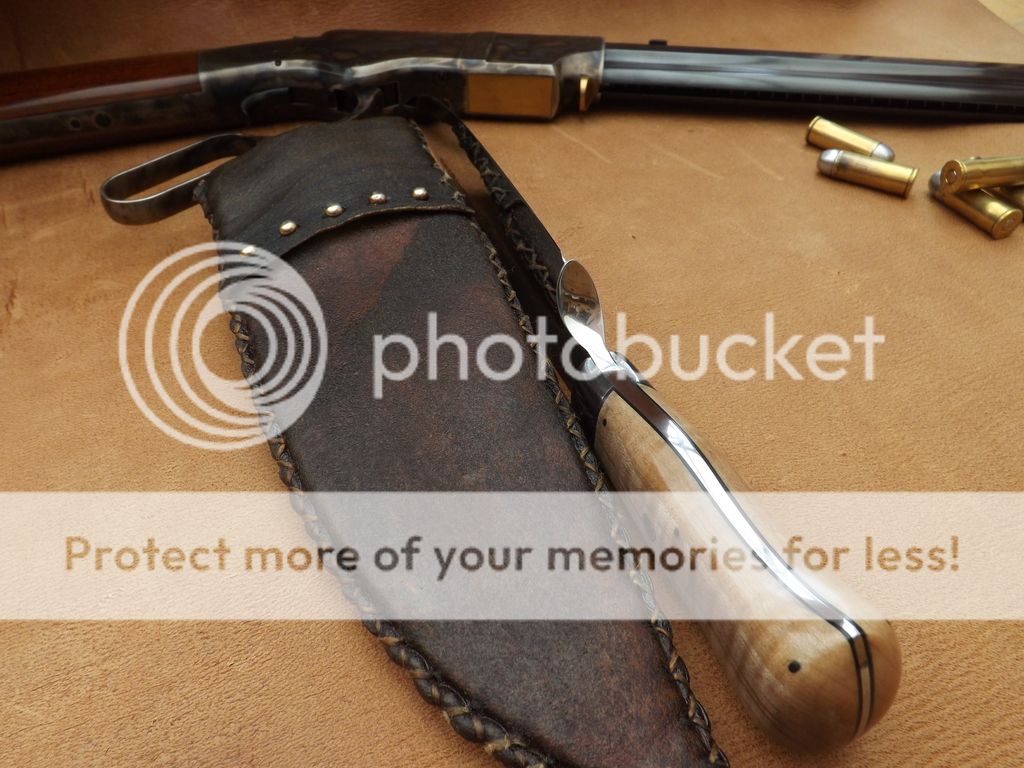
This Brut De Forge Bowie is forged from 5160, it has an 8" blade, is 1 3/4" wide, just under 1/4" thick at the spine and is 12 5/8" long. The gun blued bolsters are dove tailed to match the stabilsed curly maple scales which are held in place on the tapered tang with six gun blued pins and one hand made mosaic pin. The scales and the bolsters are lined with black fibre liners.
The sheath is leather lined and covered with rawhide. The customer wanted a plain style sheath so I have only put five brass dots on the throat flap. The rawhide has been dyed and roughed up to make it look worn.
Thank you for taking the time to look, all comments and questions very welcome.
All the best
Steve









